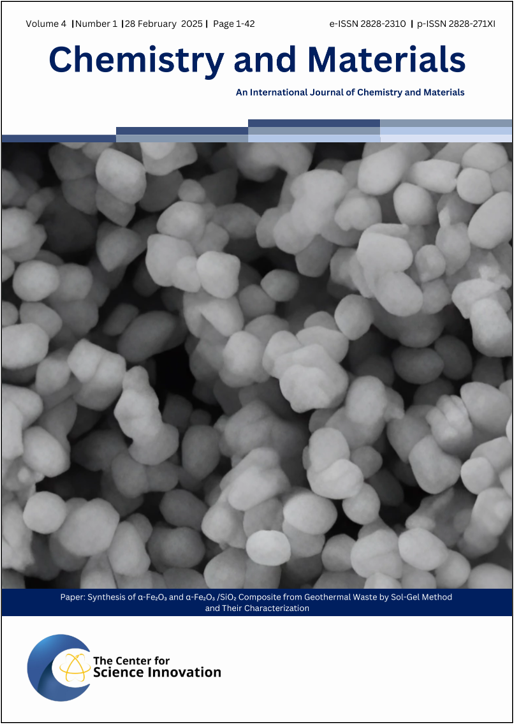PtSnNi Trimetallic and Their Catalytic Activities in Ethanol Electrooxidation
DOI:
https://doi.org/10.56425/cma.v4i1.90Keywords:
PtSnNi trimetallic, ethanol electrooxidation, chemical compositionAbstract
The declining availability of fossil fuels and their environmental impacts have driven the search for cleaner, renewable energy alternatives, such as direct ethanol fuel cells (DEFCs). However, the widespread application of DEFCs faces challenges due to the complex kinetics of ethanol electrooxidation, necessitating the development of effective catalysts. Platinum (Pt) is widely regarded as the most effective catalyst for this process. However, its use is hindered by high costs and susceptibility to poisoning by intermediates formed during the ethanol electrooxidation reaction. To address these issues, the addition of Sn and Ni to the Pt catalyst is expected to enhance its performance. In this study, PtSnNi trimetallics were synthesized using the electrodeposition method. The samples were then characterized using scanning electron microscopy-energy dispersive spectroscopy (SEM-EDX) and electrochemical tests to evaluate their catalytic activity and stability. The SEM image reveals that PtSnNi2 has the smallest particle size compared to other PtSnNi samples. Additionally, the results indicate that PtSnNi2, with a composition of 73% Pt, 26% Sn, and 1% Ni, exhibits the optimal electrolyte concentration, leading to the highest catalytic activity and stability. This is evidenced by the lowest Rct, lowest Ib/If ratio, and highest current density in the ethanol oxidation reaction.
Downloads
Published
Issue
Section
License
Copyright (c) 2025 Hilman Syafei, Raudhatul Hadawiyah, Mulya Muhammad Nur

This work is licensed under a Creative Commons Attribution 4.0 International License.



